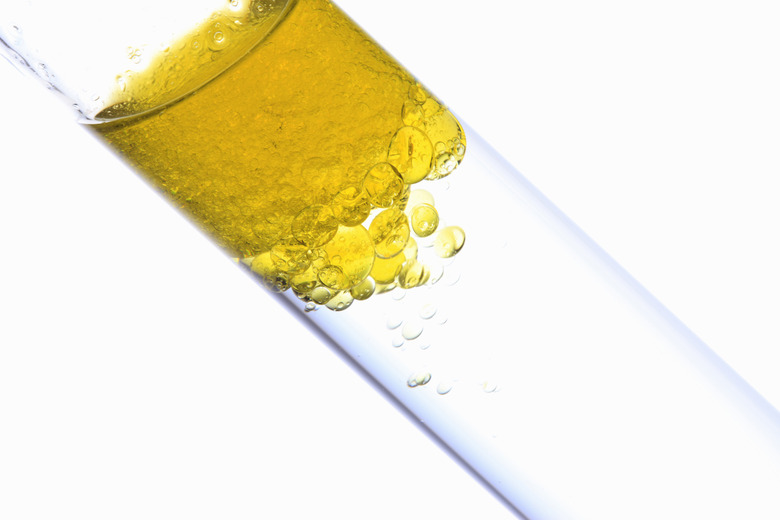Physical & Chemical Properties Of Lipids
Most people think "lipid" is just another term for "fat," but lipids are actually an entire class of molecules. By definition, lipids include any compound created by living organisms that resists reaction with water, including fats, hormones, oils and membranes. Lipids serve many important roles, including energy storage, insulation, carrying messages between cells and forming cellular membranes. The physical and chemical properties of lipids render them well suited for these functions.
TL;DR (Too Long; Didn't Read)
Lipids are important compounds with complex roles, including energy storage, carrying messages between cells and forming membranes. The amphipathic structure of lipids ensures that one end of the molecule attracts water while the other repels water.
Amphipathic Structure
Amphipathic Structure
Lipids that form cellular membranes are usually amphipathic. This means that one end of each lipid molecule is attracted to water and the other repels water. When submerged in water like they are in living cells, this property automatically forces the lipids into an alignment that creates a natural water barrier. This barrier functions as the outer membrane of a cell and allows for cell specialization and cooperation.
Chemical Structure
Chemical Structure
Understanding how lipids repel water with one end and attract it with the other requires unpacking the basic chemical structures of lipid molecules and water molecules. Water molecules are naturally polar with one positively charged side and one negatively charged side. Lipids lack a hydrogen ion on one end, which makes this end of the molecule positively charged and hydrophilic, or attracted to water. The other end contains balanced ions, lacks a charge and is, therefore, hydrophobic, or repelled by water.
The Lipid Cholesterol
The Lipid Cholesterol
Cholesterol is one lipid that has received a great deal of medical attention for the role it plays in heart disease and strokes. Cholesterol exists in two forms: high-density lipoprotein, or HDL, and low-density lipoprotein, or LDL. High levels of LDL in the bloodstream easily becomes a health risk, as it can collect on the interior of blood vessels, along with other substances, and form plaque. This plaque constricts the vessels and reduces flexibility. HDL, the "good" form of cholesterol, returns LDL to the liver for processing and expulsion. For this reason, a proper amount of HDL helps prevent heart disease and strokes.
Importance of Lipids
Importance of Lipids
It is significant that lipids move freely between water and other lipids because they often serve as messengers within an individual cell or across an entire body. Lipids also form very dense atomic structures, so a single lipid molecule may hold several bonds capable of storing and releasing chemical energy.
From forming watertight membranes to carrying chemical messages to storing energy, lipids are an important class of molecule for living organisms.
References
Cite This Article
MLA
Smith, Mike. "Physical & Chemical Properties Of Lipids" sciencing.com, https://www.sciencing.com/physical-chemical-properties-lipids-7910522/. 14 May 2018.
APA
Smith, Mike. (2018, May 14). Physical & Chemical Properties Of Lipids. sciencing.com. Retrieved from https://www.sciencing.com/physical-chemical-properties-lipids-7910522/
Chicago
Smith, Mike. Physical & Chemical Properties Of Lipids last modified August 30, 2022. https://www.sciencing.com/physical-chemical-properties-lipids-7910522/
